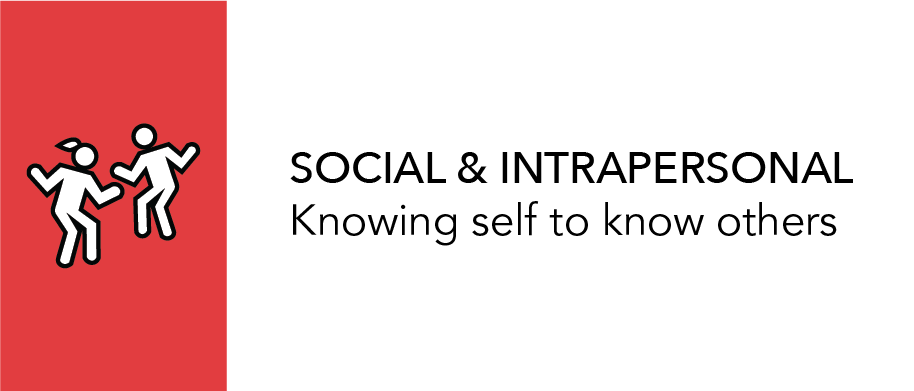Foundational Wellness: Social & Intrapersonal

Social and intrapersonal wellness refers to the interactions that you have with others and with yourself. This foundation of wellness addresses our innate desire for human connection, the quality of that connection, and the establishment of a sense of belonging within a community in balance with our relationship with our self.
-
Social
Learning how to interact with others and acquiring norms, behaviors, and appropriate social skills. The casual interaction with others and the ability to form friendships and acquaintanceships.
-
Relational
The connection, association, or involvement between two or more people. This can be with partners, friends, family, colleagues, etc.
-
Emotional
The experience of how a person is feeling. The interaction between emotional experiences and mental state or behavioral changes.
-
Emotional Intelligence
Being able to effectively identify and express the emotions one is experiencing in an appropriate manner. Additionally, the ability to take this effective emotional communication into their relationships with others.
-
Gratitude
Setting time aside to show appreciation and thankfulness.
-
Peer Pressure
Being influenced by the members of one’s own peer group. The feeling that one must act in a certain way or do the same things as other people of one’s own social group to be liked or respected by them.
-
Body Image
A person's perception of their physical self and their thoughts and feelings. These can be positive, negative or both and can include memories, assumptions, and generalizations.
-
Communication Skills
Speaking, clarifying, listening, observing, and empathizing. Involves verbal, non-verbal, and digital communication.
-
Loneliness and Isolation
Loneliness is the distressing feeling of being alone or separated. Isolation is the lack of social contacts and having few people to interact with regularly. People can be isolated yet not feel lonely and people can be lonely yet not be isolated. The two do not always occur together. The distinction is that loneliness is a distressing emotional state.
-
Working Well With Others
Giving equal respect to those around you. Having effective teamwork skills, responsibility, and honesty.
-
Play
Allowing ourselves to be spontaneous or creative. Playfully enjoying novel experiences which helps make new connection in the brain.
-
Family Unit
The definition of family will be personal to every individual. Overall, within the structure of a family unit, there will be a person teaching boundaries and social standards to set appropriate behavior. There are many aspects of a family unit. There are chosen families, blood families, foster families, adoptive families and more.
